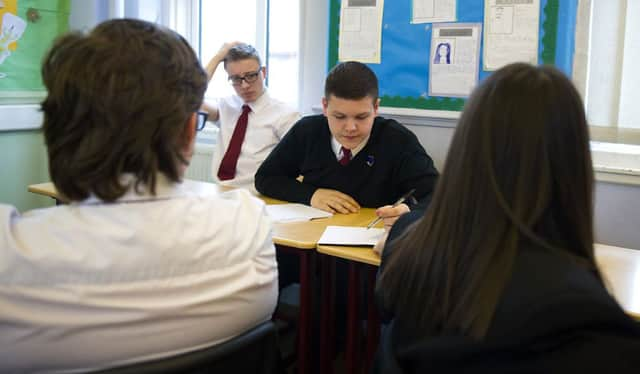Number of Scottish pupils taught in ‘super-size’ classes rises


Official statistics showed last year a total of 26.3 per cent of pupils in this group – 44,712 youngsters – were being taught in class sizes of 26 or more.
That was despite the Scottish Government’s “aspiration” of reducing class sizes for youngsters in the first three years of primary to 18 pupils or less.
Advertisement
Hide AdAdvertisement
Hide AdThe figure is up from 26.1 per cent of P1 to P3 pupils in 2017, and compares to the 38,278 P1 to P3 pupils taught in classes of 26 or more in 2012.
The figures also showed the number of P1 to P3 children being taught in a class size of 18 pupils or less has fallen to 20,613, meaning just 12.1 per cent of youngsters benefit from being in a smaller class.
That is down from 20,997 the previous year and compares to the 31,101 youngsters who were taught in a class with fewer than 18 students in 2012.
At the same time the Liberal Democrats highlighted figures showing 43,193 primary schools pupils were being taught in “super size” classes made up of 31 or more students – up from 31,175 in 2012.
Party education spokesman Tavish Scott said: “The number of pupils being taught in super-size classes has soared on the SNP’s watch.
“Classes of this size make it harder to close the attainment gap. Smaller classes help pupils learn and increases the amount of contact time between teachers and those children who need extra help.”
Scottish Government statistics also showed that in 2018 there were 511 P1 pupils being taught in a class with more than 25 students.
That was despite legislation brought in in 2010 to limit class sizes for P1 to a maximum of 25.
Advertisement
Hide AdAdvertisement
Hide AdThat, however, was an improvement on 2017, when 631 youngsters were in classes that were too large, according to the legislation.
Scotland had 2,483 schools in 2018, with a total on 693,251 pupils. Of those, 400,276 youngsters were at primary school.
The average class size in primary schools last year was 23.5 – the same as 2016 and 2017, but higher than in 2012 when it was recorded at 22.7.
On average P1 to P3 classes had 23.2 pupils. Across the country the proportion of youngsters in this group being taught in a class of 18 or less varied from 56.4 per cent in the Western Isles to 3.1 per cent in the Dundee City council area.
The figures showed an increase in the total number of teachers working in Scotland’s schools, going from 51,513 in 2017 to 51,959 last year.
In addition the number of staff working in schools to support pupils with additional needs rose by 7.7 per cent over the year to 14,547
Education secretary John Swinney said: “While all teachers work with pupils with additional support needs, I welcome the increase in specialist staff which shows education authorities are continuing to invest in having the right support, in the right place, to meet young people’s needs.
“The latest data also shows that, overall, teacher numbers in Scottish schools are at their highest since 2010, with primary teacher numbers at the highest level since 1980.”
